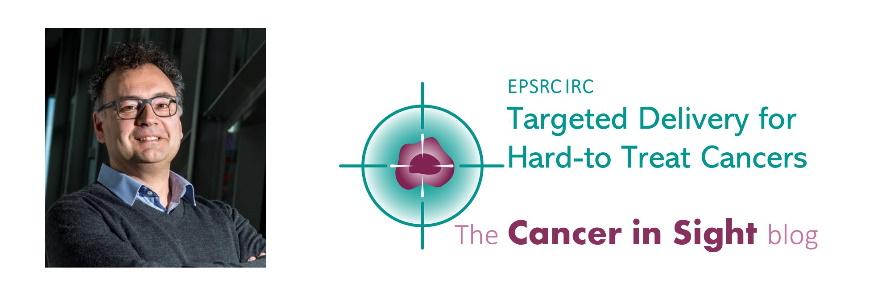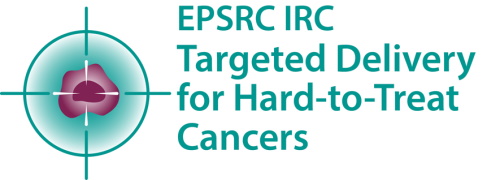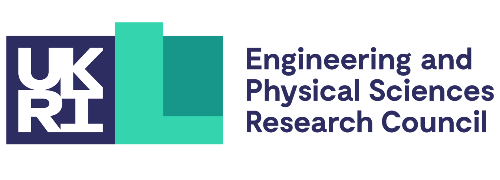
A six-year, £10m Engineering and Physical Sciences Research Council (EPSRC) grant to lead a consortium of five universities to develop new, effective technologies to administer drugs for the treatment of three difficult cancers has just reached its mid-point. Professor George Malliaras, Director of the EPSRC Interdisciplinary Research Collaboration (IRC) in Targeted Delivery for Hard-to-Treat Cancers, sets out the importance of long-term funding for science.
Our current task is to develop new technologies that can overcome the challenges of effective drug delivery to three hard-to-treat cancers. The cancers in the sights of the IRC – mesothelioma, pancreatic cancer and brain cancer – are hard-to-treat because they come with their own defence mechanisms. Brain tumours such as glioblastoma have ill-defined boundaries making them difficult to fully remove surgically, while also being protected from conventional chemotherapy drugs by the blood-brain barrier. Pancreatic and mesothelioma tumours have fibrous outer layers making drug penetration problematic.
It is a frustrating situation – doctors have the right drugs but can’t currently get them to where they need to be. And while the survival rate for most cancers has doubled over the last 40 years, with 50% of patients surviving 10 or more years, survival rates remain below 14% for hard-to-treat cancers. Our goal at the IRC is to develop three technologies suitable for hard-to-treat cancers and prepare them for human trials – and this takes time. Professor George Malliaras, Director IRC in Targeted Delivery for Hard-to-Treat Cancers
It is a frustrating situation – doctors have the right drugs but can’t currently get them to where they need to be. And while the survival rate for most cancers has doubled over the last 40 years, with 50% of patients surviving 10 or more years, survival rates remain below 14% for hard-to-treat cancers.
Our goal at the IRC is to develop three technologies suitable for hard-to-treat cancers and prepare them for human trials – and this takes time.
The EPSRC funding for the IRC, £10m over six years, enables a longer-term, interdisciplinary research programme which comprises 18 principal investigators working across six universities, Cambridge, Imperial, UCL, Glasgow, Birmingham and, more recently, Nottingham. Our shared aim is to develop and validate drug-delivery technologies to support the work of clinicians and improve survival rates for patients.
Essentially our work is experimental and happens in the lab. At the IRC we are developing high-capacity vehicles and injectable gels, as well as implantable devices to better target hard-to-treat cancers. Having a specific clinical focus is necessary to best progress the technologies from the lab to the bedside in a timely fashion.
We develop materials and devices and explore their structure and properties before transitioning to models and validating processes, always driving development towards the end goal of human trials that truly test the efficacy of the device. To this end we engage with clinicians from the very start to map the real-life need for technology development, what has to happen when, where the path leads, and what and where the bottlenecks and obstacles might be. A truly interdisciplinary process, our scientists, engineers and clinicians are all adept at communicating across traditional discipline boundaries.
We are now midway in our programme and at a tipping point where development is moving towards validation. Covid slowed our progress when labs were temporarily shut and researchers redeployed to work on pandemic-related projects, but we are back on track and have made significant achievements along the way.
My colleague here in Cambridge, Prof Oren Scherman, is leading the development of an injectable hydrogel that can be loaded with drugs to target the post-operative resection cavity of the brain and has demonstrated increased survival of rodents treated with the drug-delivering gel. The hydrogel forms excellent apposition to the walls and helps the drug to diffuse deeper into the margin of the tumour to be more efficient in killing the remaining cancer cells. This technology is currently the most advanced of the IRC and furthest along the validation process. We are now trying to secure funding for human trials – our EPSRC funding takes us to the point of readiness for human trials but not beyond.
Another Cambridge colleague, Dr Ronan Daly and his team are developing a simulation tool that enables us to accurately explore how a drug would diffuse in the brain. It allows us to carry out experiments with great precision and explore different modes of operation for an implantable deliverable device. This tool, like all the technologies being developed, has potential beyond the goal of the IRC. These technologies can have more generic applications as drug delivery platforms used by the targeted delivery community. This is significant as the possible clinical impact could be even larger.
The work of the IRC demonstrates the importance of long-term funding for science. Typically, funding supports one or two post-docs for two to three years, which limits the amount of work that can be achieved. Research that involves the transition of technology to the clinic requires bigger thinking and a greater headcount, making the funding stream critical to progress. An unexpected benefit of the global pandemic is renewed public faith in science. I hope that bodes well for future funding of science in this country.


